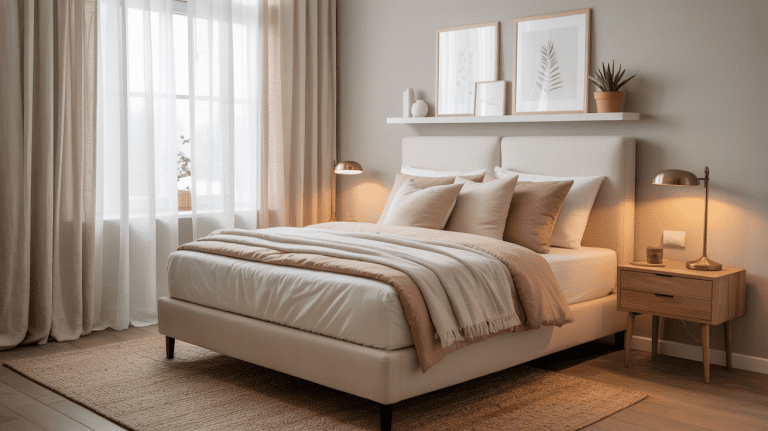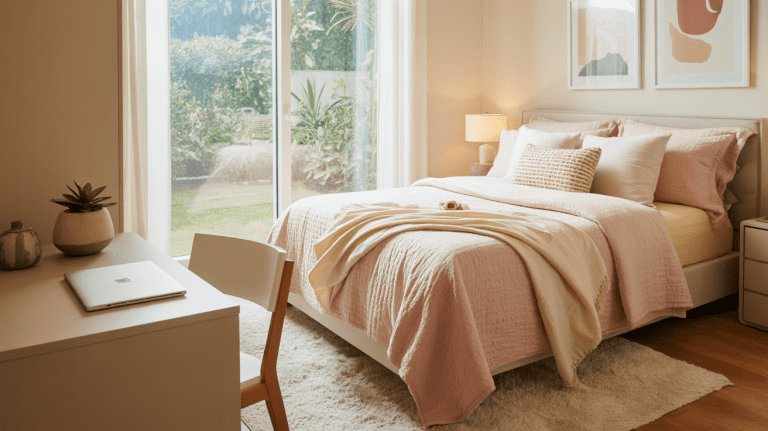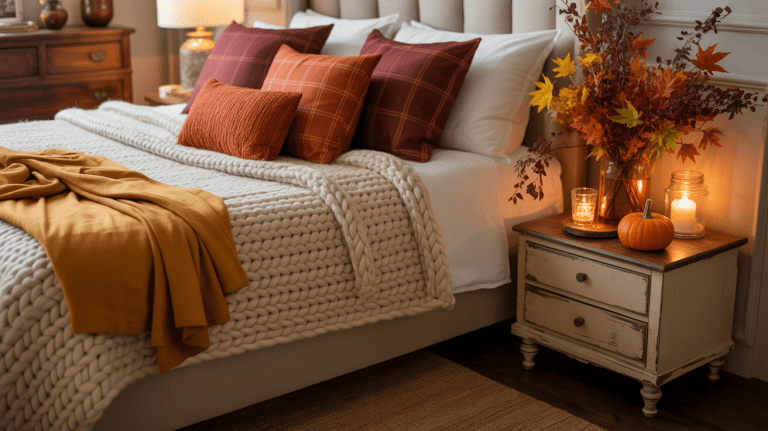18 Wardrobe Design Bedroom Ideas: Transform Your Space with Smart Storage Solutions
Creating the perfect wardrobe design for your bedroom is more than just adding storage – it’s about maximizing space, enhancing functionality, and elevating your room’s aesthetic appeal. Whether you’re working with a spacious master bedroom or dealing with bedroom ideas for small rooms, the right wardrobe design can transform your space into an organized, stylish sanctuary.
A well-designed bedroom wardrobe serves as both a practical storage solution and a stunning focal point that complements your overall decor. From walk-in closets to space-saving built-ins, these 18 wardrobe design ideas will help you create the perfect storage solution for your bedroom while maintaining style and functionality.
1. Built-In Wardrobe with Sliding Doors
Built-in wardrobes with sliding doors are perfect for bedrooms where space is at a premium. These sleek designs maximize storage while maintaining a clean, uncluttered appearance that works beautifully in modern bedroom settings.
Sliding doors save space because they don’t require clearance to open, making them ideal for narrow bedrooms or areas where a traditional hinged door would block pathways. Choose from materials like wood, glass, or mirrored panels to match your bedroom’s aesthetic.
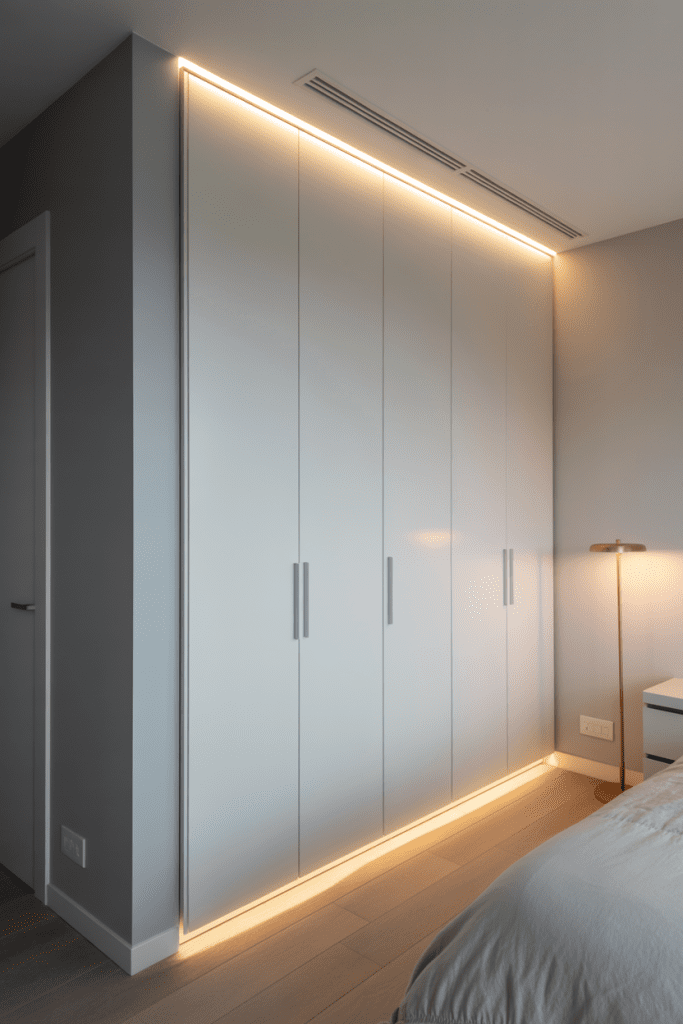
The beauty of built-in wardrobes lies in their customization potential – you can design the interior layout to perfectly match your storage needs, from hanging space for dresses to specialized compartments for accessories. According to IKEA’s storage solutions guide, proper interior organization can increase storage capacity by up to 40%.
2. Walk-In Closet Design
Transform a spare room or large bedroom area into a luxurious walk-in closet that rivals those found in luxury master bedrooms ideas. Walk-in closets offer maximum storage and organization possibilities while creating a dedicated dressing area.
Design your walk-in closet with a mix of hanging rods at different heights, shelving for folded items, and drawers for smaller accessories. Include a central island or bench for additional storage and a convenient place to sit while getting dressed.
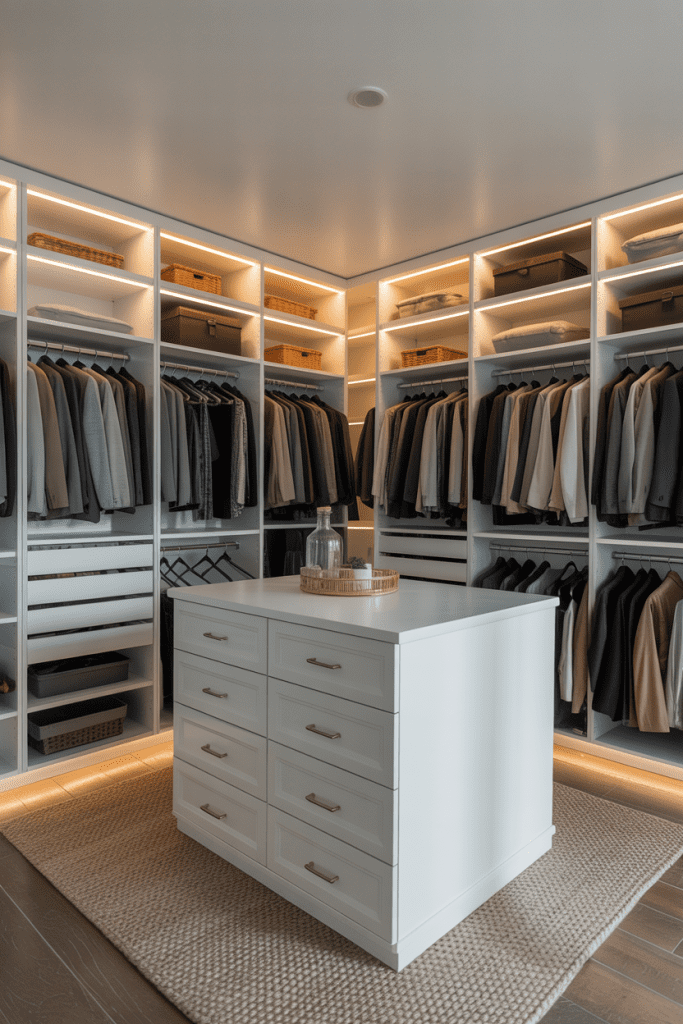
Consider adding a full-length mirror, comfortable seating, and proper lighting to create a boutique-like experience in your own home.
3. Corner Wardrobe Solutions
Corner wardrobes make excellent use of often-overlooked space, especially in small bedroom ideas for couples where every square foot matters. These designs can be custom-built or purchased as modular units that fit perfectly into corner spaces.
L-shaped corner wardrobes maximize storage while maintaining easy access to all areas. The angled design creates visual interest and can help define different zones within your bedroom.

4. Mirrored Wardrobe Doors
Mirrored wardrobe doors serve a dual purpose – they provide full-length mirrors for getting dressed while making your bedroom appear larger and brighter. This design trick works exceptionally well in smaller bedrooms where you want to maximize the sense of space.
Choose from full mirror panels, frosted glass with mirror accents, or decorative mirror configurations. The reflective surfaces bounce light around the room, creating an airier, more open feeling.
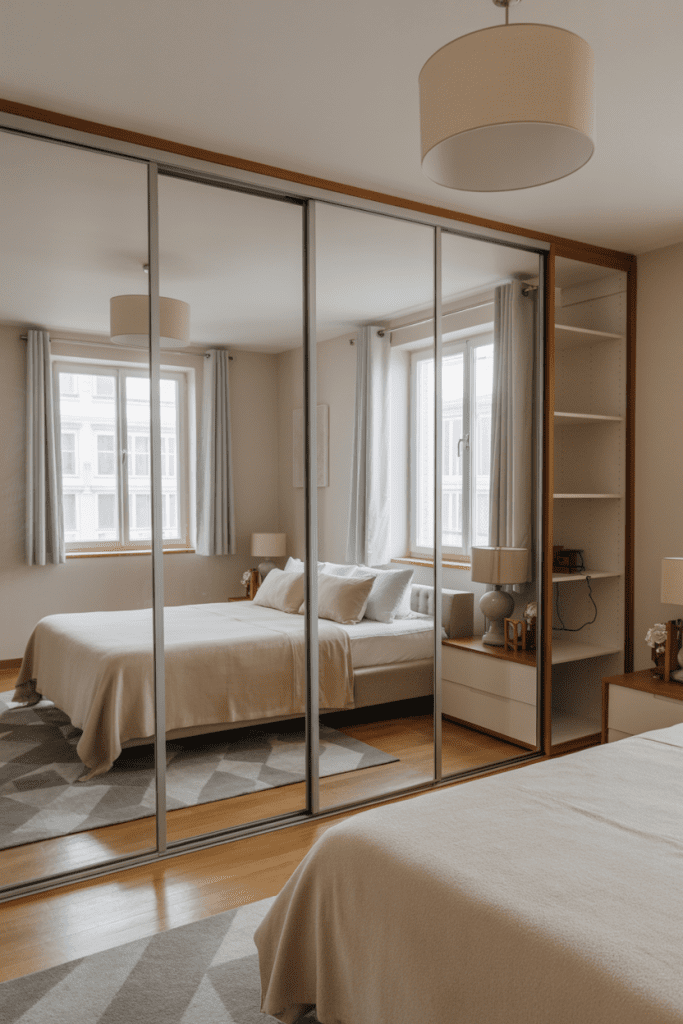
5. Open Wardrobe Systems
Open wardrobe systems create a boutique-like atmosphere in your bedroom while keeping your clothes easily accessible. This design works particularly well for people who prefer to see their clothing options at a glance.
Combine open hanging areas with closed storage for items you prefer to keep hidden. Use decorative boxes, baskets, and organizers to maintain a tidy appearance while keeping everything within easy reach.
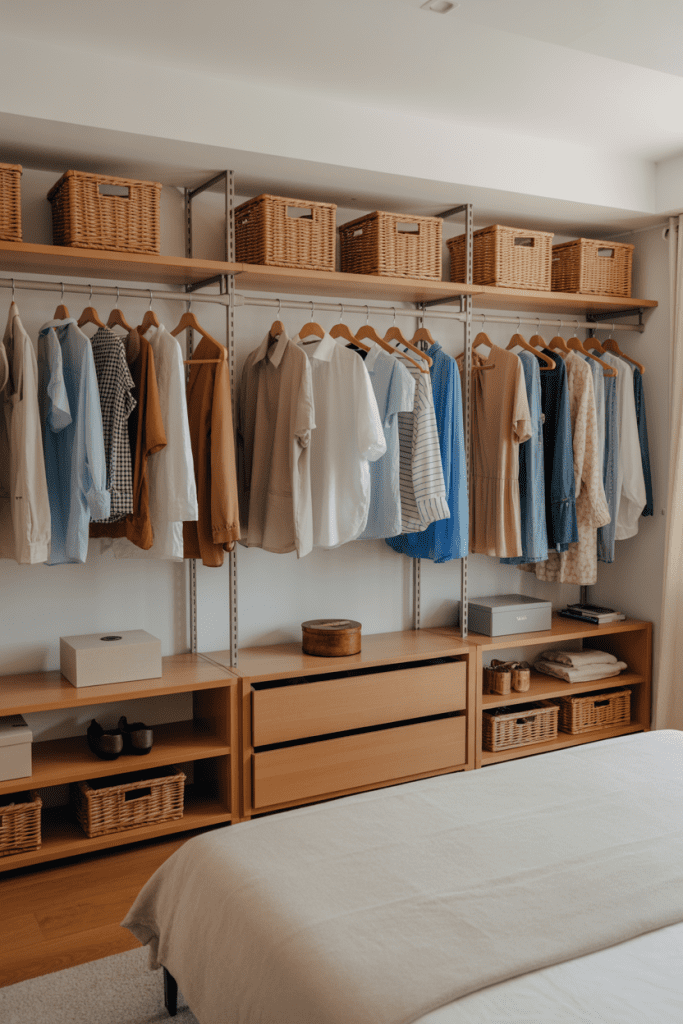
6. Wardrobe with Integrated Dressing Table
Combine your wardrobe with a modern bedroom dressing table design to create a cohesive and functional bedroom setup. This integrated approach saves space while providing everything you need for your daily routine.
Design the dressing table area with proper lighting, mirror placement, and storage for cosmetics and accessories. This creates a dedicated beauty zone within your wardrobe area.
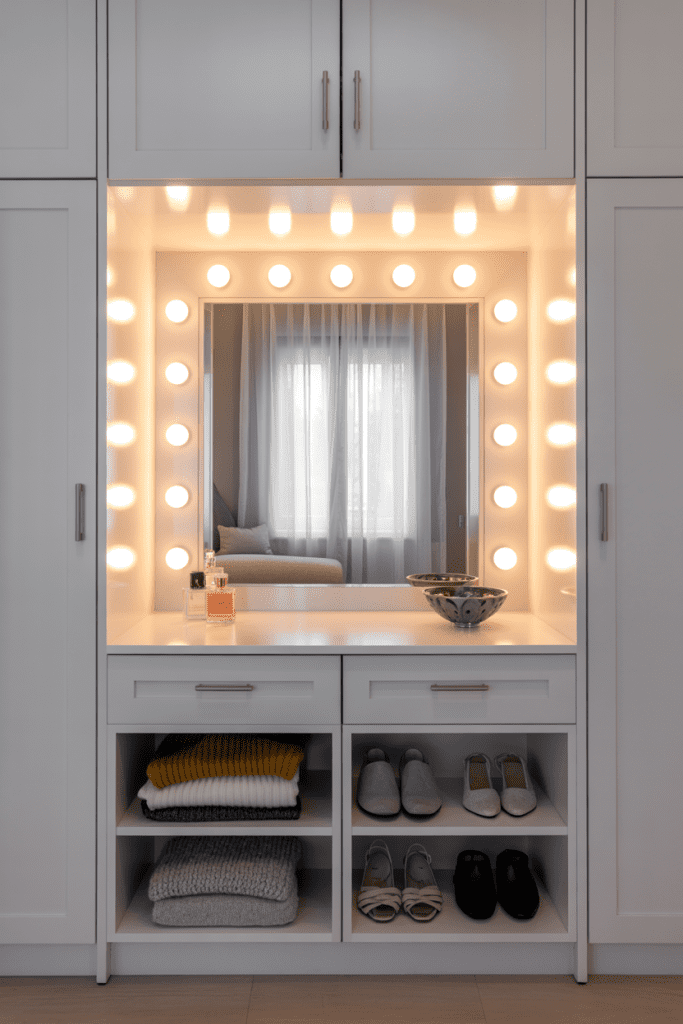
7. Modular Wardrobe Systems
Modular wardrobe systems offer flexibility and can be easily reconfigured as your needs change. These systems work well for renters or anyone who likes to update their bedroom layout periodically.
Mix and match different modules including hanging sections, drawers, shelves, and specialty storage to create a customized solution. The modular approach also allows you to start small and add components over time.
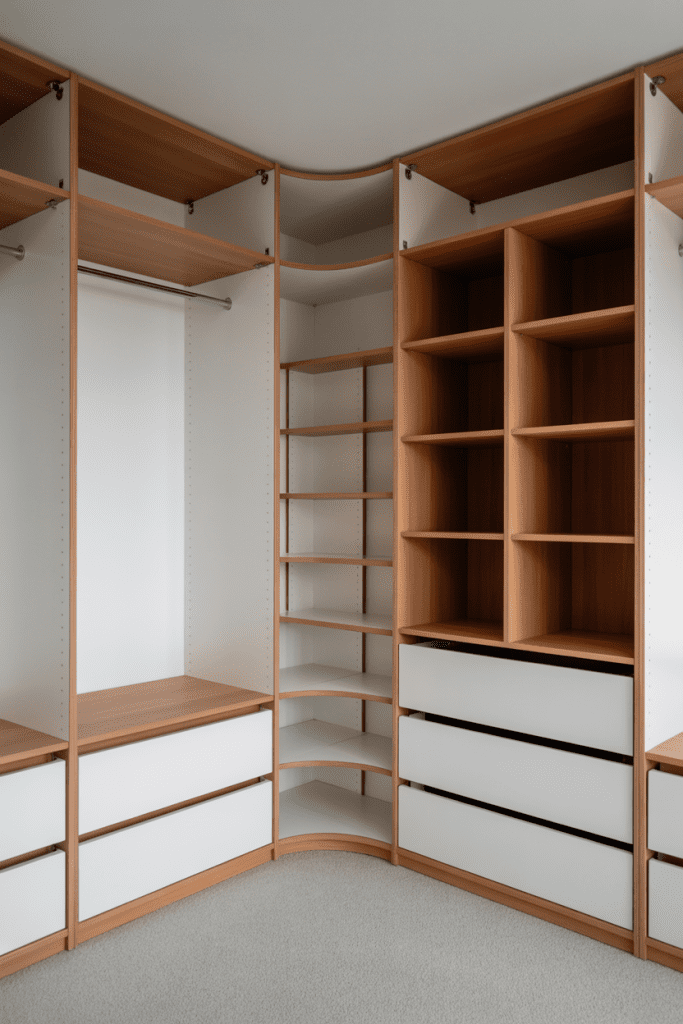
8. Under-Stair Wardrobe
If your bedroom is located near a staircase, consider utilizing the under-stair space for wardrobe storage. This creative solution maximizes every available inch while keeping storage hidden from view.
Custom-built under-stair wardrobes can include hanging space, shelving, and even a small dressing area. The angled ceiling creates unique storage opportunities for different types of clothing and accessories.
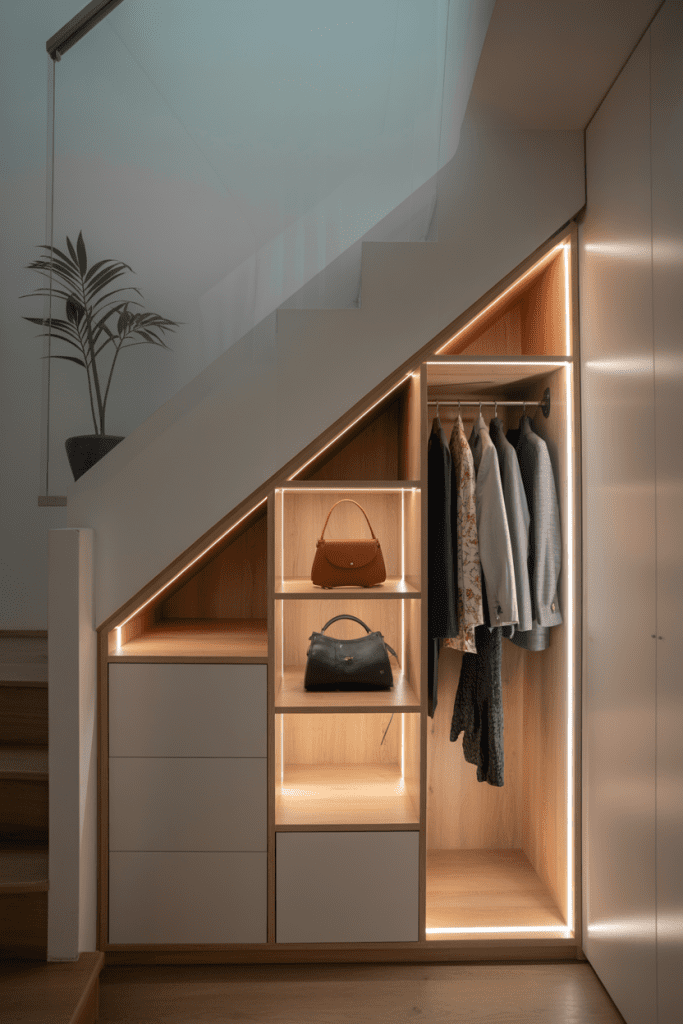
9. Glass-Front Wardrobes
Glass-front wardrobes add elegance and sophistication to your bedroom while keeping your clothes visible and organized. Choose from clear glass for full visibility or frosted glass for a more subtle, translucent effect.
This design encourages you to keep your wardrobe organized since everything is on display. It works particularly well with color-coordinated clothing and adds a luxurious hotel-like feel to your bedroom.
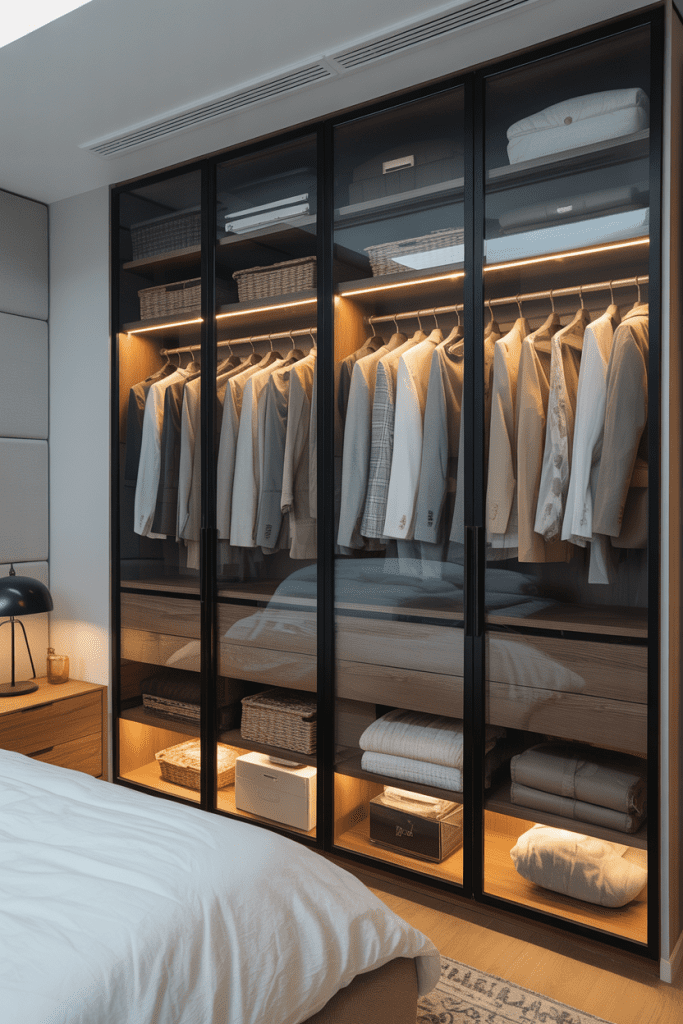
10. Wardrobe with TV Integration
Modern wardrobe designs can incorporate entertainment centers, combining storage with media functionality. This approach works well in bedrooms where you want to maintain a clean, uncluttered appearance.
Design the TV area with proper ventilation and cable management. Consider a lift mechanism that allows the TV to be hidden when not in use, maintaining the wardrobe’s streamlined appearance.
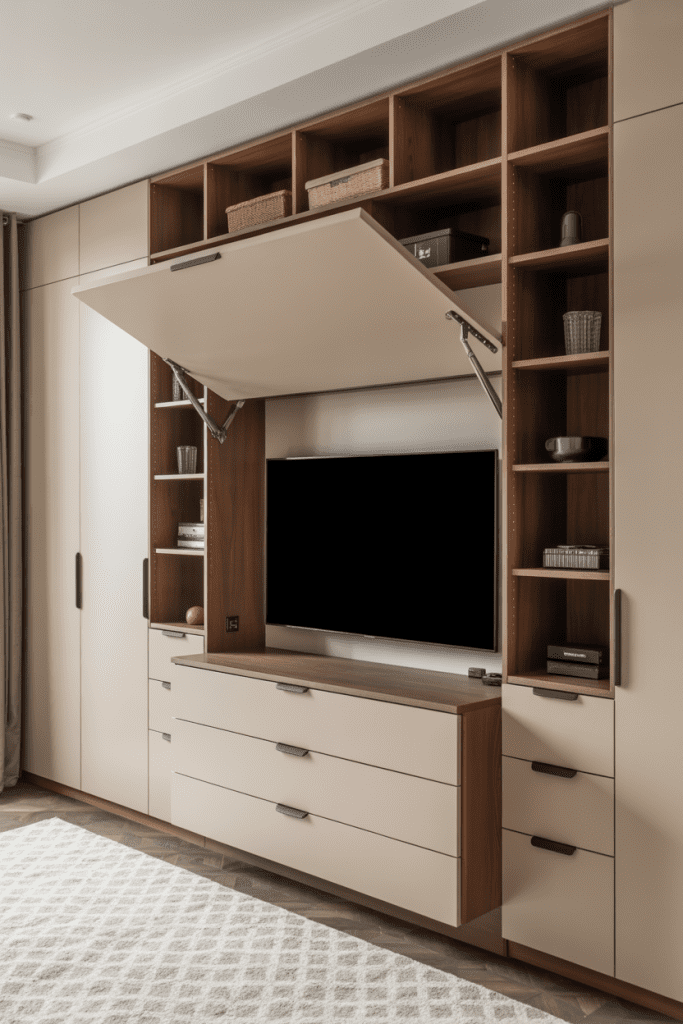
11. Colorful Wardrobe Interiors
While wardrobe exteriors often feature neutral colors, the interior offers an opportunity to add personality and color. Bright interior colors make it easier to find items and add a fun, unexpected element to your storage.
Consider painting the interior in your favorite color, adding patterned wallpaper, or using colorful organizational accessories. This approach works especially well in teen bedroom ideas where personal expression is important.

12. Vintage-Style Armoires
For bedrooms with traditional or cottage decor ideas styling, vintage armoires provide character and ample storage. These freestanding pieces can be antique finds or new furniture designed with vintage appeal.
Armoires work well in bedrooms where built-in storage isn’t possible or desired. They can be moved if you relocate and often feature beautiful craftsmanship and details that add to your room’s aesthetic.
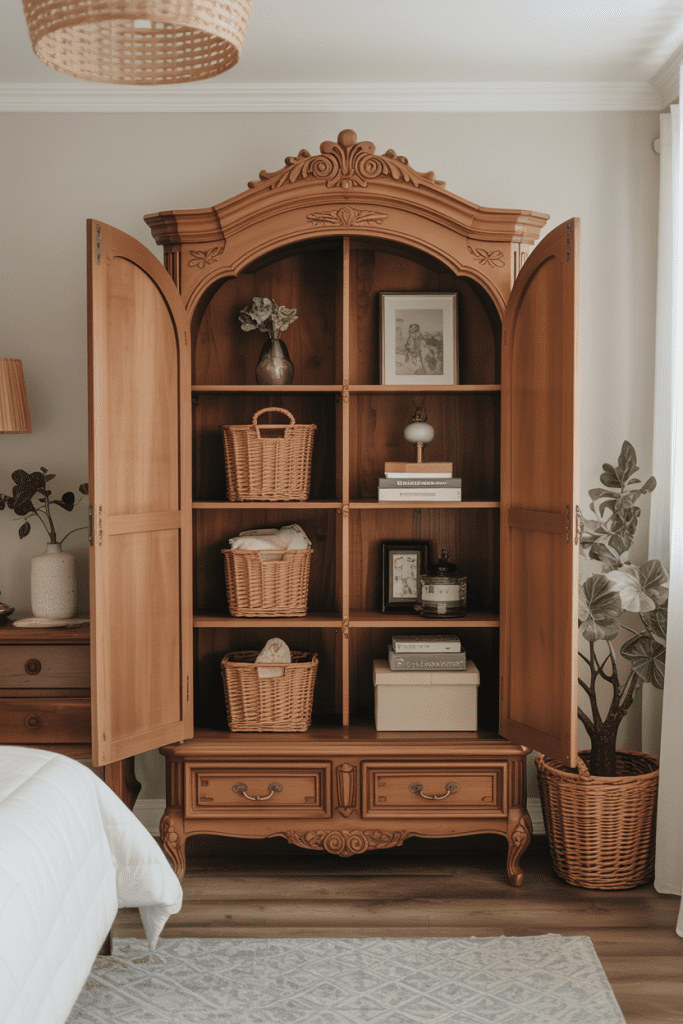
13. Minimalist Wardrobe Design
Embrace the principles of Japandi interior ideas with minimalist wardrobe designs that focus on clean lines, natural materials, and functional simplicity. These designs eliminate visual clutter while providing efficient storage.
Use natural wood tones, handle-free doors, and simple geometric shapes. The minimalist approach creates a calming environment that promotes relaxation and mindfulness.

14. Wardrobe Room Dividers
In studio apartments or open-plan bedrooms, wardrobes can serve as room dividers, creating separate zones while providing essential storage. This dual-function approach maximizes utility in multipurpose spaces.
Design double-sided wardrobes that provide storage on both sides, or create a partial divider that maintains visual connection while defining different areas of your space.
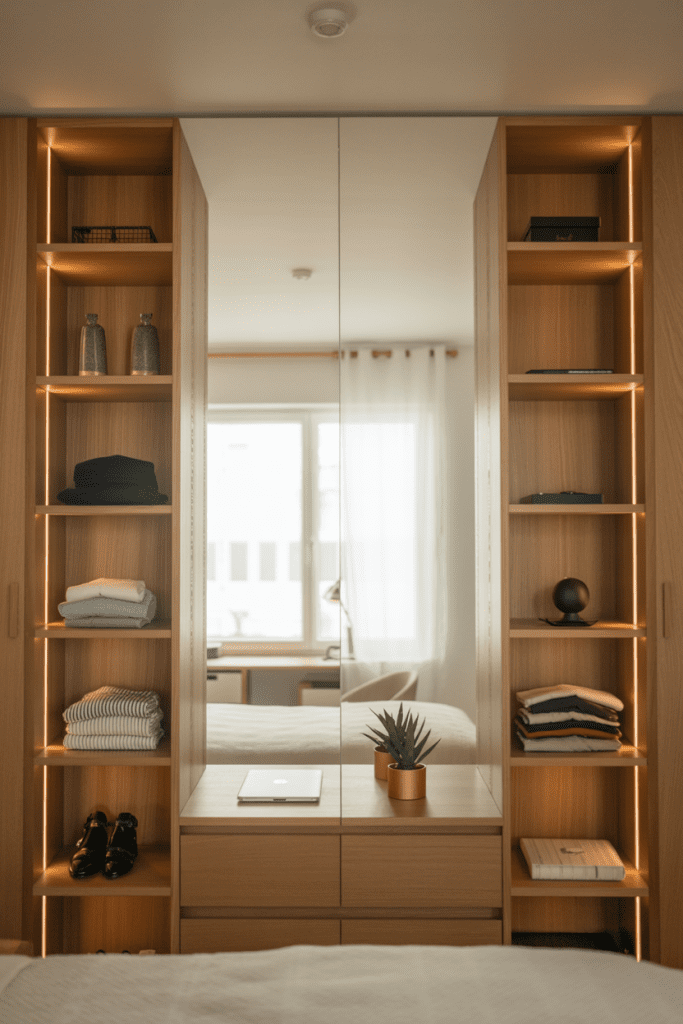
15. High-Ceiling Wardrobe Solutions
Take advantage of high ceilings with floor-to-ceiling wardrobe designs that maximize vertical storage space. This approach works particularly well in older homes or loft-style bedrooms with generous ceiling height.
Include a library ladder or pull-down hanging rods to access higher storage areas safely. Use the upper sections for seasonal items or things you don’t need to access frequently.
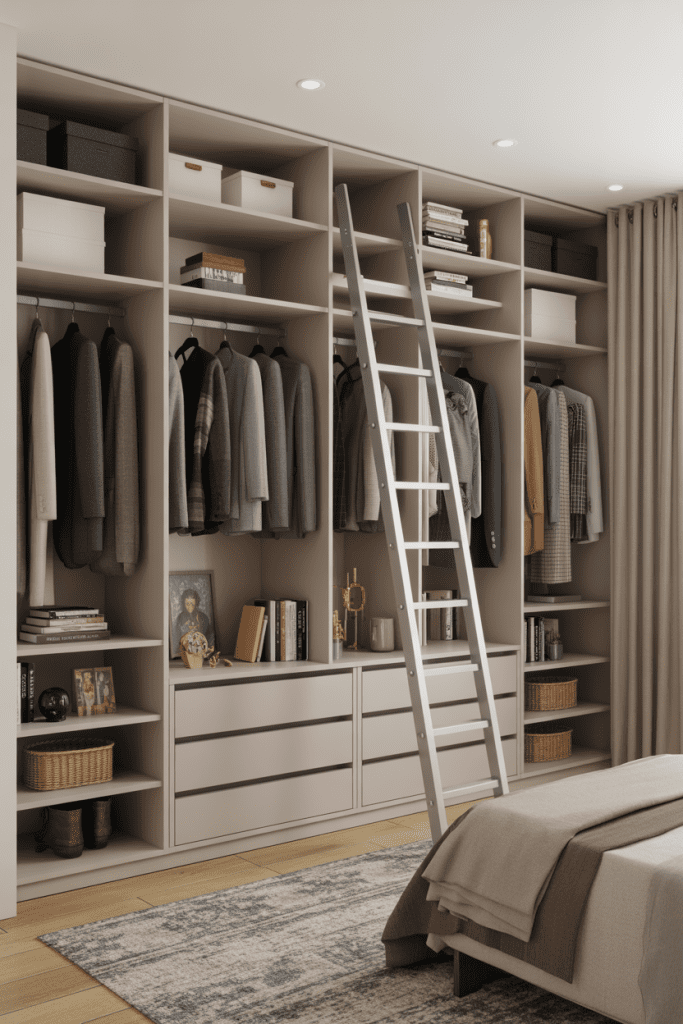
16. Wardrobe Lighting Solutions
Proper lighting transforms any wardrobe from functional storage to a luxurious dressing area. LED strip lights, puck lights, and motion sensors create a boutique-like experience while making it easy to find what you need.
Consider different lighting zones – general illumination for the entire wardrobe, task lighting for specific areas like tie racks or jewelry storage, and accent lighting to highlight special pieces. As lighting experts at Better Homes & Gardens recommend, layered lighting approaches create both functionality and ambiance in wardrobe spaces.
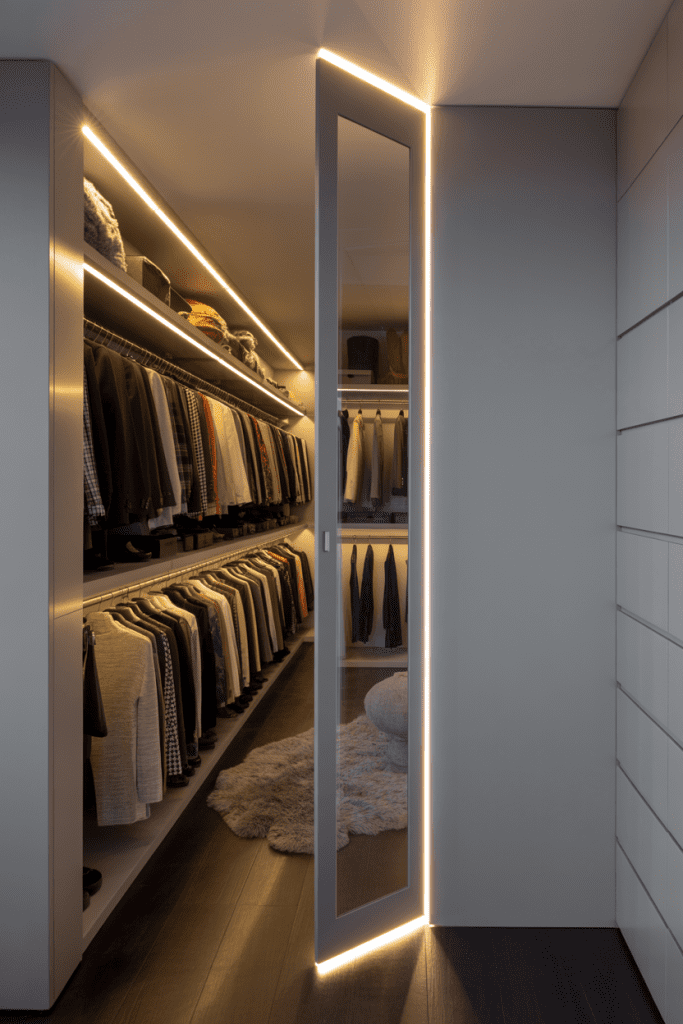
17. Sustainable Wardrobe Materials
Choose eco-friendly materials for your wardrobe design, including reclaimed wood, bamboo, or sustainably sourced timber. These choices contribute to environmental responsibility while creating unique, character-rich storage solutions.
Reclaimed wood brings history and texture to your bedroom, while bamboo offers durability and rapid renewability. These materials often feature beautiful natural variations that add visual interest to your design.

18. Smart Technology Integration
Modern wardrobes can incorporate smart technology including automated lighting, climate control for delicate fabrics, and even inventory management systems. These high-tech features enhance functionality while protecting your clothing investment.
Consider motorized hanging rods that lower for easy access, humidity controls for leather goods and delicate fabrics, or apps that help you catalog and coordinate your wardrobe.
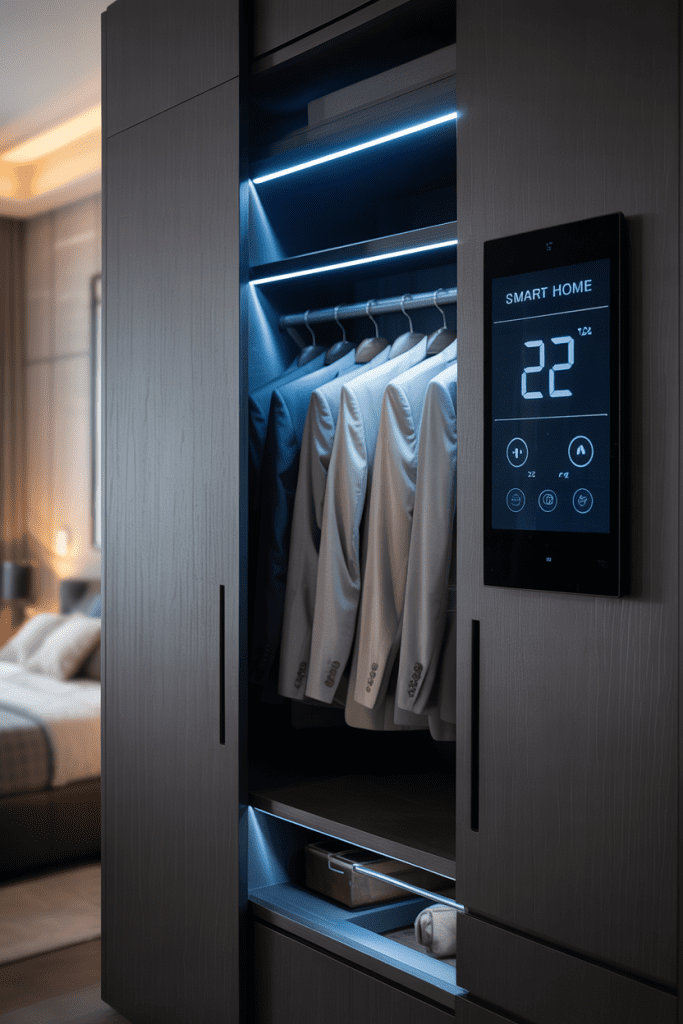
Planning Your Perfect Wardrobe Design
When planning your wardrobe design, consider your specific needs, available space, and personal style preferences. The best wardrobe design is one that seamlessly integrates with your bedroom’s overall aesthetic while providing efficient, accessible storage for all your belongings.
Start by assessing your current wardrobe inventory and storage needs. Consider factors like the types of clothing you own, how often you access different items, and any special storage requirements for accessories, shoes, or delicate garments.
Remember that great wardrobe design, like other aspects of home decor such as kitchen remodel ideas or bathroom design ideas, should balance functionality with aesthetics. The goal is creating a storage solution that not only meets your practical needs but also enhances your bedroom’s overall design and your daily routine.
For those working with challenging spaces, explore small office ideas for inspiration on maximizing efficiency in compact areas, or consider how entryway ideas might inform your approach to wardrobe organization and accessibility.
Frequently Asked Questions
Q: What’s the standard depth for a bedroom wardrobe?
A: Standard wardrobe depth is typically 24 inches (60cm) to accommodate hanging clothes comfortably. However, you can go as shallow as 20 inches for shirts and blouses, or deeper (up to 28 inches) if you have space and want extra storage depth.
Q: How do I maximize storage in a small bedroom wardrobe?
A: Use vertical space with double hanging rods, add shelf dividers, incorporate drawer organizers, use the back of doors for accessories, and consider vacuum storage bags for seasonal items. Multi-level hanging and slim hangers also help maximize space.
Q: What’s better: hinged doors or sliding doors for wardrobes?
A: Sliding doors are better for tight spaces since they don’t require clearance to open, while hinged doors provide full access to the wardrobe interior. Choose based on your room layout and access preferences.
Q: How much should I budget for a custom wardrobe?
A: Custom wardrobes can range from $1,000-$5,000+ depending on size, materials, and complexity. Built-in wardrobes typically cost more than freestanding options, but they add value to your home and maximize space efficiency.
Q: What lighting is best for wardrobe interiors?
A: LED strip lights or puck lights work best for wardrobe interiors. They produce minimal heat, last longer, and provide bright, even illumination. Motion sensors add convenience by automatically turning lights on when you open the wardrobe.
Q: How do I organize my wardrobe efficiently?
A: Group similar items together, use the “one in, one out” rule, organize by color or season, keep frequently used items at eye level, and invest in quality hangers and organizers. Regular decluttering keeps your wardrobe functional.
Q: Can I install a wardrobe myself or do I need professionals?
A: Simple freestanding wardrobes can be DIY projects, but built-in wardrobes, especially those requiring electrical work or structural modifications, are best left to professionals. Consider your skill level and the complexity of the project.
Q: What materials are best for wardrobe construction?
A: Solid wood offers durability and beauty but costs more. Plywood is stable and less expensive. MDF is budget-friendly but less durable. For hardware, soft-close hinges and quality drawer slides enhance functionality and longevity.




